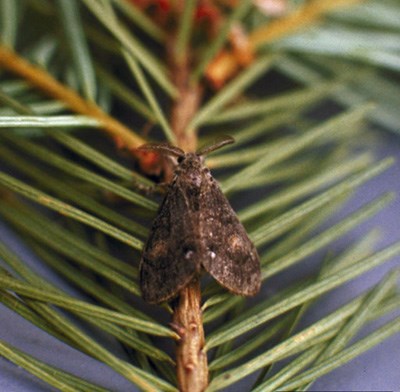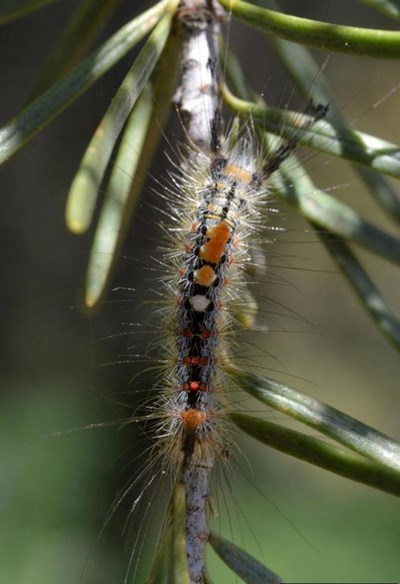
USDA Forest Service - David McComb The Douglas-fir Tussock moth is a native insect found in the parks and throughout the Pacific Northwest. The Douglas-fir tussock moth caterpillar is easily identified by the four prominent tufts (or tussocks) that run along its back. The moth feeds on Douglas-fir trees and other true firs. The Douglas-fir tussock moth population fluctuates, with major population increases every 7 to 10 years—the last big outbreak in the parks was in 1997-1999. In 2021, we began to notice signs of another population surge. What Happens During A Population Surge?Large numbers of caterpillars feed on fir tree needles, sometimes defoliating trees. They may fall from the tree canopy of firs and land on anything below, including people. Caterpillars will finish their feeding cycle and remain dormant until the following year, when they typically resurface in June. It is likely that they will be present in much greater numbers in 2021. 
William M. Ciesla, Forest Health Management International Can Tussock Moths Affect People?Tussock moths can harm people. If you see a tussock moth, it is important not to touch it. Some people are allergic to moths or other stages of the lifecycle. People are most likely to come into contact with the hairs on the caterpillars, which can cause irritation or an allergic reaction. Symptoms can include itching, rashes, watery eyes, runny nose, cough. Avoid Exposure to Tussock Moth Life Stages
Learn MoreThe parks work with entomologists from Region 5 of the U.S. Forest Service to monitor Douglas-fir tussock moth prevalence and will update this page as more information becomes available. The April 2020 Douglas-fir tussock moth leaflet includes more detailed information about the species, photos, and a list of references. |
Last updated: October 16, 2023
